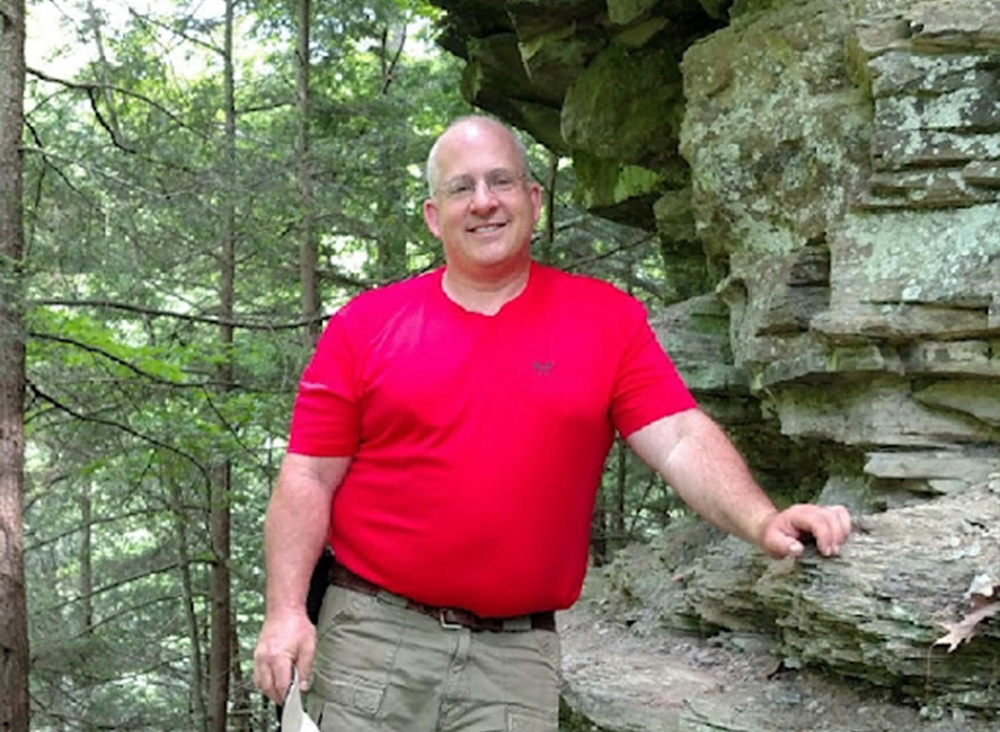
When I was younger, nothing thrilled me more than backpacking. In the northeast United States, trails are mostly wooded with a combination of evergreens and deciduous trees. As a result, no matter the season, you never know what’s around the next bend. This lack of forecast is at the same time a gift of wonder, and a frustrating situation. It’s perspective that determines which way you see it at any given moment. When I’m calm and relaxed, it’s a joy filled with surprises. When it’s raining and getting dark, well, I could use a clue as to how much lies ahead. Trails are subject to “detours.” Circumventing large rocks, the back and forth hiking of switchbacks, and, of course, weather and unexpected trail blockage challenges. One thing is certain. It will not be a straight line. Truth is, if you hiked a straight line, it would be kinda boring. Walk down a highway for a bit and find out.
Still, though, my admiration of walking in the woods, as serpentine as it might be, did not translate to my expectation of a recovery path. Nope. Not one bit.
I figured, when our 17 year old went to outpatient treatment the first time, everything was going to be set. They knew what to do to help him. It would all work out, quickly and nearly painlessly.
I’m one to admit my mistakes (mostly) and here I will tell you: I was wrong. Dead wrong. 100% in error. The next 6 months involved overdoses, a few episodes of him running away, emergency room visits, a suicide attempt and more than one episode of violence. Wait, there’s more. Stints in psyche wards, the police, and our home morphing into a prison for all. The stress was unbelievable. My fears were off the chart. My idea of “getting him fixed” grew distant. This was a good thing.
I started to hear what the programs were saying. I dove into Al-anon. I participated in therapy groups and sessions with him and my wife. I read books that were recommended. I knew that I did not know enough. I did not understand what he was going through. I did not understand my role. I knew segments of my own life were a mess. It became clear, while he was in wilderness, that I had much to do. It was time. Like those hiking trails, I had taken significant detours in my life to avoid “obstacles.” My parents divorced when I was 4. My father died when I was 11. My 26 year old brother died when I was 17. None of this was spoken about. Our household was emotion free. I have no recollection of my mother saying “I love you” to me prior to me being 35 or so. So there was that stuff.
I had spent most of my life trying not to deal with these messes, the pain, the hurt, the anger. There was nothing straight or predictable in my life’s course to date. Why did I think Jon’s avoidance of uncomfortableness would be any different? I was naive. I think there was also some hopefulness in there….if he could get in and out of recovery smoothly, quickly, effortlessly…..well, perhaps I could continue to avoid those skeletons in my over-packed baggage. Yeah, not so much.
Jon’s path of recovery reminds me of a small river making its way through the earth. Always eroding away at something, and building something elsewhere. It continues to move side to side, in and out….it’s the nature of humans. He’s always moving, and the direction is not always predictable. My path also still wonders. Up, left, down, south, and so forth.
Here’s the difference today as compared to my path 3 years ago: I’m headed somewhere. I’m not avoiding pitfalls, quicksand or thick underbrush. I stick my toe in. I take a step. I slide back now and then, sure, yet I don’t lose sight of where I am going, where I want to be. My path meanders, and I hope it forever does. I want to be “me” as much as I possibly can. This is an ever-moving target. I mean, what does it mean to be me? What does it mean for anyone to be themselves? I think it’s not a fixed point…not a place….not a way of being set in stone. Yes, there will be some constants, and yet, I am a flexible, curious, loving, feeling, being. These traits and many others, to me, inherently suggest change.
I often use the analogy of a recovery path being a combination of the childhood games Candyland and Chutes and Ladders. You zoom up a ladder, only to find yourself stuck in a molasses swamp in no time. You go 6 spaces in a single turn, and there’s the chute, returning you to the start. This recycling is a needed part of recovery, and it takes some getting used to. Efforts and patience are often rewarded with notable progress over time. I’m putting in my time, along-my-very-much-not-straight path.